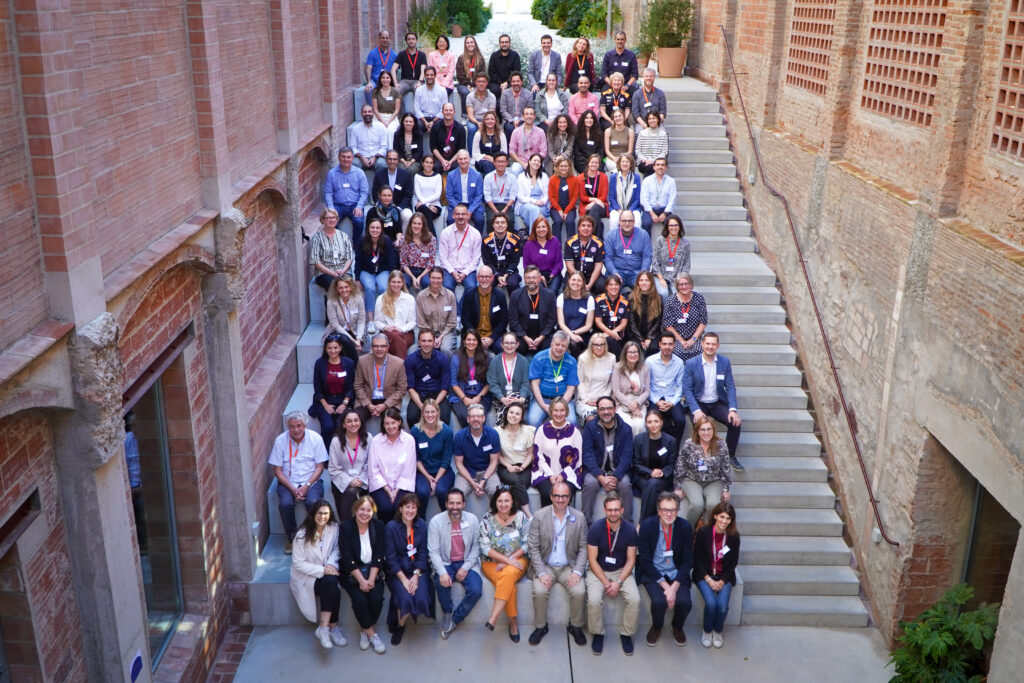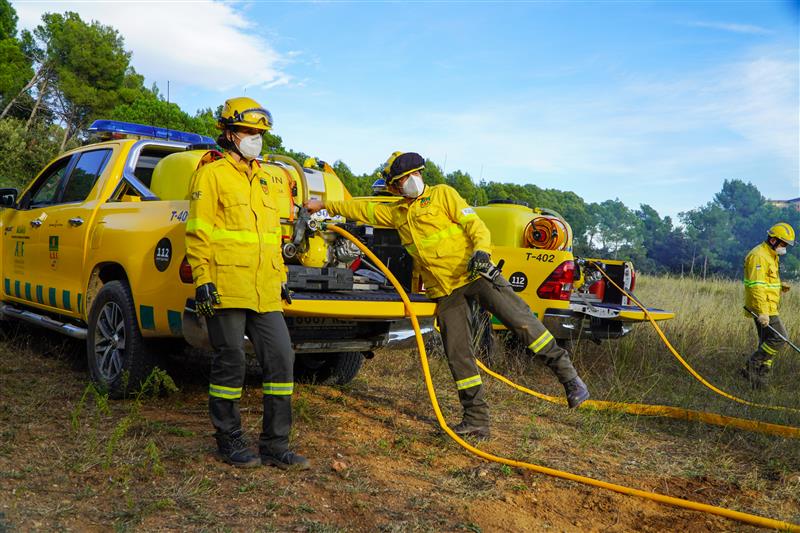Two-day meeting brings together 60 partners from 12 European regions to share knowledge, test innovations, and strengthen collaboration
The 60 partners of the RESIST Project, representing 12 European regions, met last week in Terrassa, Spain, for a two-day meeting focused on advancing solutions to multi-hazard climate change impacts. The gathering offered an opportunity to review progress, exchange knowledge, and demonstrate innovative technologies developed within the project.
“RESIST is all about meaningful collaboration between different stakeholders – both within the project regions and multilaterally across European actors and initiatives,” highlighted Vilija Balionyte-Merle, RESIST Project Coordinator and Senior Business Developer at SINTEF, at the beginning of the meeting.

Two Days of Knowledge Sharing and Innovation Testing
During the meeting, RESIST partners updated each other with the progress made after two-and-a-half years of project work, discussed shared challenges, and the next steps. Participants engaged in presentations, poster sessions, and co-creation workshops where they got to know each region’s societal challenges in depth.
A highlight of the two-day event was a pilot test of a novel wildfire prevention technology, combining a thermal camera with a drone. The demonstration took place at the Audiovisual Park of Catalonia, on the outskirts of Terrassa, near the city’s forested areas.
“It’s about using technology to our advantage to make cities more resilient. It’s not about replacing what we already do but about improving it and supporting our work with innovative tools,” shared Àlex Torres, RESIST Technician at Terrassa Civil Protection.
The City Council of Terrassa, through its Civil Protection Unit, demonstrated how the system works: the thermal camera, installed on building with a view across the forest, detects heat sources and smoke columns. If an anomaly is identified, images and data are sent in real time to the Municipal Operational Coordination Centre, which can deploy a drone to inspect the area and transmit live images to emergency services. The goal is to detect forest fires early and send alerts promptly.

The RESIST partners were also honoured to hear from Prisca Haemers, Policy Officer at the Mission on Adaptation to Climate Change, and Volodymyr Moroz, Research Scientist at Odesa National University. Haemers brought insights from Brussels on the policy background and the way forward for the mission and the role of RESIST within it.
Moroz shared the climate challenges faced by the Ukrainian region, including September’s devastating floods, and explained how RESIST is helping Odesa build climate resilience for the future.
Digital and Community Solutions in Catalonia
Terrassa serves as the main testing site in Catalonia, where the Civil Protection Service is working closely with RESIST to implement solutions locally. Local partners are testing the Argos tool – a digital solution designed to enhance disaster preparedness – and a citizen participatory toolkit to actively engage communities in climate adaptation planning. These solutions are also being shared and transferred to Baixo Alentejo (Portugal) and Puglia (Italy) within the framework of the project.
The city faces floods, wildfires, and heatwaves, and the tools demonstrated during the meeting support faster and better-informed decisions. “In many cases, we can’t prevent an extreme weather event, but if we know what to do, we gain precious time — time that allows us to act more effectively and, in the most severe cases, to save people’s lives,” highlighted Shinju Park, Senior Researcher, Polytechnic University of Catalonia.
Partners also discussed recent work with vulnerable communities in Terrassa to better understand heatwave impacts and refine the citizen participatory toolkit.
Shared Solutions Across Europe
Beyond Terrassa, RESIST partners are developing solutions to wildfires, flooding, soil erosion, and heatwaves across 12 European regions. These range from policy and governance tools, like cost–benefit analyses of nature-based solutions in Southwest Finland, to community engagement initiatives, such as integrated landscape management in Central Portugal.
All regions are also working to create Graphical Digital Twins of their territories, enabling them to foresee and predict climate impacts more precisely and support decision-making across Europe.
The Terrassa meeting underlined the importance of collaboration and knowledge sharing in tackling climate risks. By bringing together local authorities, researchers, and technical partners, the RESIST Project is ensuring that innovative solutions are tested, improved, and ready to be transferred across Europe.













